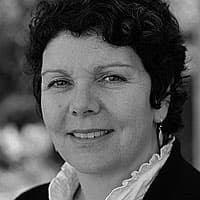Nici CUMPSTON

In September 2007, the Federal Government stopped the flow of water from the River Murray into Lake Bonney in the Riverland of South Australia. Aboriginal people called this lake ‘Nookamka’ prior to European settlement.
I am connected to this river system through my Barkindji family and I am compelled to document the ongoing demise of this once abundant area. I am fortunate to have been shown the different signs that reveal past occupation, and wherever I go I am constantly looking for and observing these ‘signs’. In every group of trees along the western side of the lake there are scar trees, ring trees, birthing and shelter trees. Artefacts and the bones of our ancestors are being exposed as the drying lake recedes. I can feel the presence of our ancestors, and I listen to my feelings as I spend time in these sites. Ancient cooking grounds with remnants of shells and burnt debris are scattered across the shifting sands.
Aboriginal heritage protection laws have recently been established, which gives us all great hope for the protection of our ancestors, but they don’t allow for the future of this mighty river system. A lot more needs to be done in consultation with Aboriginal Elders and environmental experts.
I create these images to raise awareness and to portray the beauty of Nookamka along with the tragedy that is happening to this environment.
In the nineteenth and early twentieth century, hand-rendering of photographs was common practice in the absence of colour film. Hand-colouring was used to give monochrome images substance and vitality by defining and highlighting certain features. For similar reasons, this complex technique is at the heart of Nici Cumpston’s practice—her gentle rendering of black-and-white photographs delineates elements within the landscape and imbues her work with a ghostlike quality.
The focus of Cumpston’s recent photographs is Nookamka, a freshwater lake situated in the Riverland region of South Australia. Like her ancestor Khan Zada, an Afghan cameleer, Cumpston spent time in her youth traversing the backwaters of the Riverland region.[1]
Nookamka, or Lake Bonney as settlers (interlopers) called it, receives and feeds water into the River Murray and further beyond to the greater Murray-Darling river system that spans the states of Queensland, New South Wales, Victoria and South Australia. The waters that flow through the river system connect Nookamka to the lower Darling River, or Paaka, in western New South Wales. Paaka lies within the traditional homelands of the Barkindji (Paakintji) people. Cumpston, a Barkindji woman, is culturally connected to the river system.
As with its two names, Nookamka and Lake Bonney, the lake has two intertwining histories: one Indigenous, the other Western; one of abundance, the other of depletion; one of occupation, the other of abandonment. Nookamka, however, continues to be an undisclosed casualty of the long-running mismanagement of the River Murray. In the 1930s, the lake was flooded in an attempt to control the water to and from the river; neither lake nor river fully recovered. Nookamka was once the largest and most flourishing of freshwater lakes in the Riverland region and ‘one of nine meeting places for Indigenous people along the River Murray’.[2] It was also popular with drovers. Today, its water has become stagnant, and the once majestic river gum trees stand lifeless. The extent of the damage is highly visible and is of concern to Cumpston and those living near and using the river system. Yet, for the rest of us, the damage remains unseen.
In drawing attention to the present degradation of Nookamka, Cumpston also calls our attention to its past occupation. Despite colonial notions of terra nullius, of a land belonging to no one, evidence of prehistoric Aboriginal occupation continue to surface. Walkondi-woni and Nookamka ancestors marked boundary trees and ring trees that, like street signs, mapped out the lake and its resources. These trees are only visible to the trained eye, as are the middens, artefacts and ancestral remains that have been exposed through acute dryness and drifting sands. Acts of treachery have equally been exposed.
Tree stumps 2007 is a particularly poignant work, considered by Cumpston as one of her most significant. Tree stumps presents a number of lifeless trees in a sandy, arid landscape. The stumps are both witness and memorial to the past prosperity and occupation of the lake. Further, they represent a symbol of truth about the horror and destruction inflicted on the local Indigenous inhabitants. Testimonies handed down among Aboriginal families tell of the brutality of the settlers, as does archaeological evidence in a closed report to the South Australian Government.[3] Such was the prevailing disregard for Aboriginal people and culture in those days that unearthed ancestral bones were purportedly used as infill to solidify the foundations of a local bridge constructed in 1915.[4]
The foreground plays an important role in the composition of Cumpston’s work. The sandy flats in each of the works provide a place where viewers can conceptually step into the landscape. Cumpston offers viewers the opportunity to explore virtually with their senses—sight, smell, touch and sound—the landscape that is both within and beyond the canvas edge, the seen and unseen of the landscape, the disclosed and undisclosed.
Despite the degradation, Cumpston finds an innate beauty in Nookamka, which begins in, and yet goes beyond, family and cultural ties.
Carly Lane
[1] Khan Zada was one of the first cameleers to work the route between Broken Hill and outback New South Wales, South Australia and Queensland. Nici Cumpston, ‘A family story’, in Alan Mayne (ed), Beyond the black stump: histories of outback Australia, Wakefield Press, Adelaide, 2008, p 70.
[2] Tom Donkin, ‘Receding shoreline reveals new view of local history’, Riverland Weekly, 26 February 2009, pp 4–15.
[3] Donkin, pp 4–15.
[4] ‘About Lake Bonney’, Barmera Lake Resort Motel, Barmera, viewed 12 December 2010, barmeralakeresortmotel.com.au/site/thelake.




